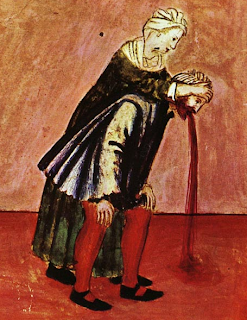Landmark Series
Methodology Score: 3.5/5
Usefulness Score: 4/5
Villanueva C, Colomo A, Bosch A, Concepción M, Hernandez-Gea V, Aracil C, Graupera I, Poca M, Alvarez-Urturi C, Gordillo J, Guarner-Argente C, Santaló M, Muñiz E, Guarner C.
N Engl J Med. 2013 Jan 3;368(1):11-21
This RCT comparing a restrictive versus liberal transfusion strategy (N=921) in acute upper GI bleeding showed that for patients who have rapid access to endoscopy (within 6 hours), a restrictive strategy (transfuse hgb < 7 g/dL) was associated with a higher probability of survival at 6 weeks (HR 0.55; 95% CI 0.33-0.92) and less adverse events (HR 0.73; 0.56-0.95) compared to a liberal strategy (transfuse hgb < 9 g/dL). This was the first large prospective RCT to address this issue and the group agreed that this was practice changing; however, it is difficult to apply the results of this study to those who have endoscopy after 6 hours.
By: Dr. Anita Lai
(Presented June 2013)
Epi Lesson:
Hazard Ratio (HR)
The hazard ratio is akin to relative risk but is used for survival analyses such as Cox proportional hazards regression. It is most often used to describe the outcome of therapeutic trials where the question is, to what extent can treatment shorten the duration of an illness. The hazard ratio is an estimate of the ratio of the hazard rate in the treated versus the control group. For example if there are two groups, group 1 and group 2, HR = 4.5 for treatment means that the risk (of relapse) for group 2 is 4.5 times that of group 1.
The hazard ratio is akin to relative risk but is used for survival analyses such as Cox proportional hazards regression. It is most often used to describe the outcome of therapeutic trials where the question is, to what extent can treatment shorten the duration of an illness. The hazard ratio is an estimate of the ratio of the hazard rate in the treated versus the control group. For example if there are two groups, group 1 and group 2, HR = 4.5 for treatment means that the risk (of relapse) for group 2 is 4.5 times that of group 1.
By Dr. Ian Stiell

